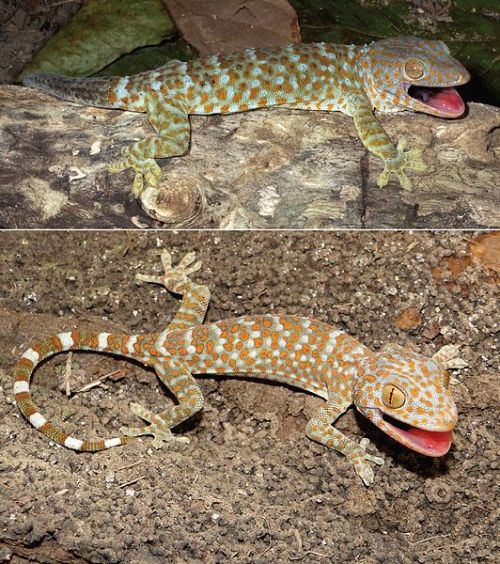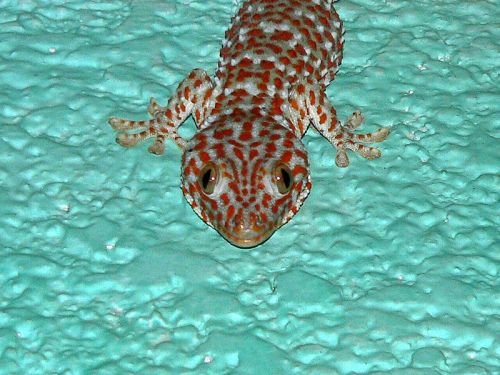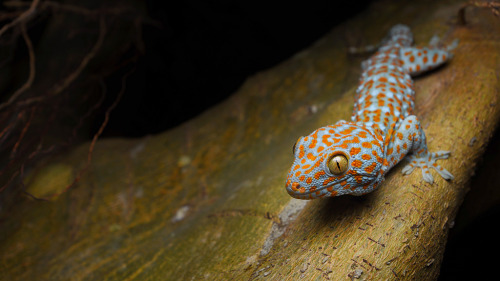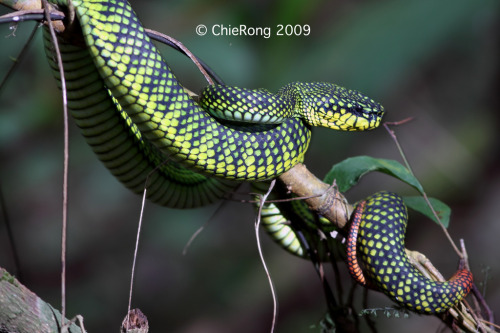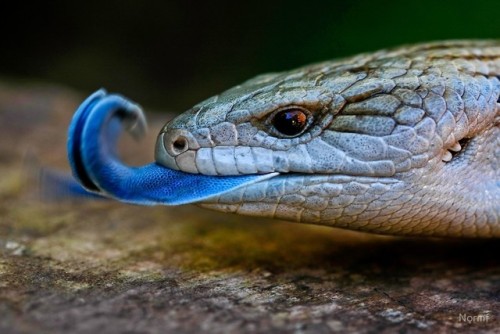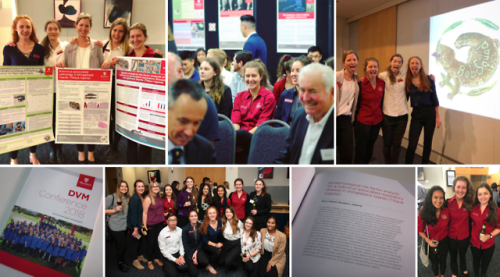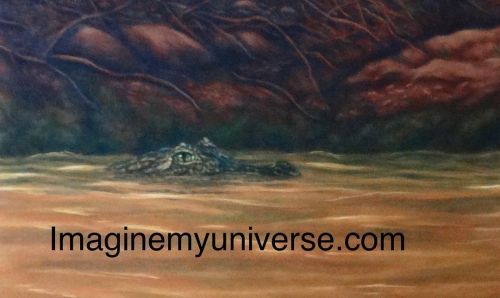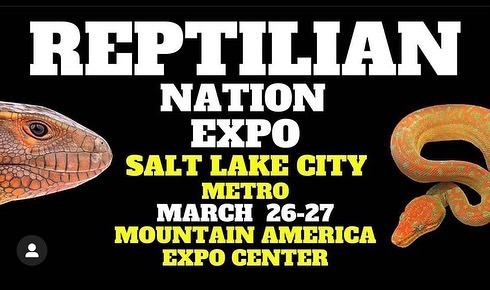#reptiles

David Cook, 1985.
Tokay gecko (Gekko gecko)
The tokay gecko is a nocturnal arboreal gecko in the genus Gekko, the true geckos. It is native to Asia and some Pacific Islands. This species occurs in northeast India, Bhutan, Nepal, and Bangladesh, throughout Southeast Asia, including the Philippines and Indonesia, and to western New Guinea in Melanesia. Its native habitat is rainforest, where it lives on trees and cliffs, and it also frequently adapts to rural human habitations, roaming walls and ceilings at night in search of insect prey. The Tokay is a large gecko, reaching up to 35 cm in length.The Tokay feeds on insects and small vertebrates. It has strong jaws with which it bites through the exoskeletons of rainforest insects. It is a strong climber with foot pads that can support the entire weight of the body on a vertical surface for a long period of time. Their mating call, a loud croak, is variously described as sounding like token,gekk-gekkorpoo-kay where both the common and the scientific name, as well as the family name Gekkonidae and the generic term gecko come from.
photo credits: Nick Hobgood,Hinrich Kaiser,Bernard DUPONT,tontantravel
Post link
Does anyone else here inexplicably enjoy seeing what gender people assume your reptiles are?
Anaconda crossing
This is such an awesome video of people helping an anaconda cross the street! I just love it. It’s a great reminder that people can be really awesome sometimes.
Everyone was being safe here, too - no one attempts to handle the snake, all they do is stop traffic.
Crotalus ehecatl, until recently described as C. simus. The species is named after the Aztec god of the wind.
Photo: Halla Mayoral
Post link
Malcolm’s pitviper (Trimeresurus sumatranus malcomi)
East Malaysia at 1,000-1,600 m elevation (3,280-5,250 feet).
Post link
Crested geckos (Correlophus ciliatus) inhabit forests of New Caledonia. They are listed as Vulnerable on the IUCN Red List due to decline in quality and extent of their natural habitat.
Photos: unknown, reptilefact
Post link
San Luis Potosi Kingsnake (Lampropeltis mexicana mexicana). Females of this species tend to have darker colouration, while males often have brighter dorsal saddles.
African Spurred Tortoise (Centrochelys sulcata). They are the largest mainland species of tortoise, and the third largest species in the world after Galapagos and Aldabra tortoises.
Photos:M. Ramgrab,Reptile Database
Post link
My little pal Big Green passed this morning. He was almost 5 so he got as much life as he could. He was so tough, I knew he wasn’t right when he let me pick him up. Love you, buddy. #biggreen #rip #anole #greenanole #lizard #reptiles #rescue #animalrescue #oklahoma #tokyo #tokyopewpew
https://www.instagram.com/p/CIGX5MMH-1NFqgk0ACmS2gZYPz8ltqOE4nf8sI0/?igshid=1x3ohsll38ok5
Post link
DVM Research Project and Conference
After two long years, I finally hit SUBMIT and waved goodbye to my research project for good. This study has caused me an unbelievable amount of stress and frustration, and probably accounted for 95% of my vet school problems. A whole lot of sweat and tears went into it (blood was provided by other aspects of vet school), leaving me as dehydrated as a cat with chronic kidney disease. It feels like the huge dark cloud hanging over me has finally lifted. Hallelujah!
A couple of weeks ago, my year group attended the first ever Murdoch University DVM Research Conference, where we presented our findings to our peers, supervisors and external practitioners. My fellow bobtail lizard researchers (the “Bobsquad”) nailed the presentations, and I think it’s fair to say we brought SHINGLE BACK! It was an interesting day, made even better by the free food and drinks! It was also the first time our whole year group had been together since last year, so it was great to catch up with everyone and hear about their experiences in practice.
Post link
Here is a close up on the caiman in my pastel piece “The Approach”. What do you think of crocodilian family? I find them to be fascinating! Please follow me for more animal artwork! #reptiles #reptilelover #caiman #crocs #crocodiles #crocodile #reptilesofinstagram #reptileart #reptileaddict #animalart #animaladdicts #wildlifeart #wildlifeaddicts #wildlifeartist #wildlifeaddict #animalartwork #animalartists #reptileartist #reptilians #reptilian #reptile #reptilebreeder #scales #pantanal #pantanalregion
https://www.instagram.com/p/CbxhZuhLO9a/?utm_medium=tumblr
Post link
I’m so excited to be at this @reptilian_nation_expo this weekend March 26-27 @mtamericaexpoc expo! Here is an example of artwork that will be available. Please follow me for more animal artwork. #animalart #animaladdicts #reptileexpo #reptiliannationexpo #reptilelover #reptiles #reptilecommunity #reptilekeeper #reptilebreeder #animalartist #animaladdict #wildlifeart #wildlifeartist #wildlifeaddicts #exoticanimals #exoticanimal #exoticpets #exoticpet #exoticanimalart #animalillustration #animalkingdom #petlovers #petlover #petart #petartists #petartwork #reptilecommunitylove (at Mountain America Expo Center)
https://www.instagram.com/p/CbfVcP_r71s/?utm_medium=tumblr
Post link
Come see me @reptilian_nation_expo this weekend March 26-27 @mtamericaexpoc expo center! I will be having an amazing art booth with tons of your favorite animals and exclusive products! Looking forward to seeing some of you there. #animalart #animaladdicts #reptileexpo #reptiliannationexpo #reptilelover #reptiles #reptilecommunity #reptilekeeper #reptilebreeder #animalartist #animaladdict #wildlifeart #wildlifeartist #wildlifeaddicts #exoticanimals #exoticanimal #exoticpets #exoticpet #exoticanimalart #animalillustration #animalkingdom #petlovers #petlover #petart #petartists #petartwork #reptilecommunitylove (at Mountain America Expo Center)
https://www.instagram.com/p/CbXo-yKrVUe/?utm_medium=tumblr
Post link
thedragonwoodconservancy on ig
laser gun gator boys
oh my god i didn’t realize this video had audio
Okay as adorable as this looks, I’m pretty sure that’s a distress sound? A “mommy help me I’m scared come save me!” sound?
This video is from Dragonwood Wildlife Conservancy, and they are yearling (last year’s babies) Cuban crocodiles. Good news for you, this isn’t actually a distress call! According to @kaijutegu (and her giant bookshelf full of reptile resources), the laser sounds are an affiliative social call that young Cuban crocodiles use to communicate with their parents. They normally stop making the noise at around two years old, which is approximately when they start dispersing from the family group.
See, Cuban crocodiles are a super social species - and one of the few where the fathers stick around and provide paternal care for the babies! In the wild, babies would regularly interact with both parents, including when they provide food. This call is basically the type of vocalization that the babies use to communicated with their parents.
These crocodiles are being hand-raised as part of a private-sector breeding and reintroduction program (because the parents are so protective of their offspring that if you left them the babies to raise, you’d never be able to safely get close to them), and so they’re responding to the guy in the video the same way because he’s constant known safe individual and also the provider of food. He’s not a threat - his presence is a good thing, and he’s worth interacting with because it normally means food. You can also tell from their behavior and body language that they’re not stressed: some of the crocodiles are actively climbing on him and interaction of their own volition, but the ones that aren’t don’t show any indicators of hyper-vigilance. If that were a distress call, every crocodile that heard it would be alert and on edge looking for the threat. Distress calls tend to only happen once or twice, because in the wild continuing to make noise makes a baby more vulnerable: so these crocodiles wouldn’t be continually vocalizing if they felt threatened. There’s no snapping or gaping or freezing, all of which would be behavioral indicators of distress or discomfort. (Here’s a video of a baby nile crocodile being harassed by photographers which will give you a visual reference for both freezing and gaping.)
So, hey, this is certifiably cute - and good for conservation!
ETHICALLY SOURCED LASER NOISES


